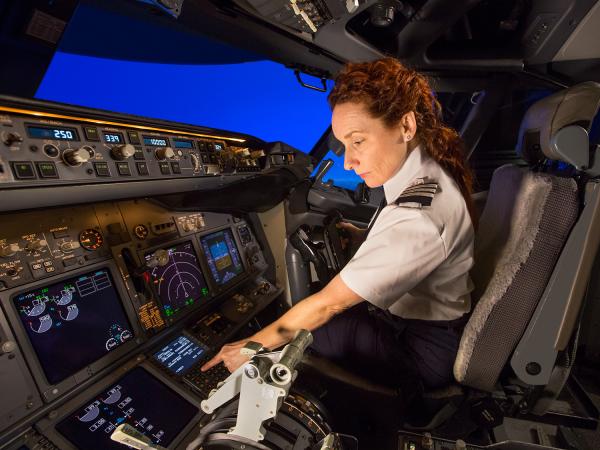OSHKOSH, Wis., July 25, 2016 /PRNewswire/ -- Boeing (NYSE: BA) released its 2016 Pilot and Technician Outlook today at EAA AirVenture Oshkosh and projects a demand for nearly 1.5 million pilots and technicians over the next 20 years.
In its seventh year, the outlook is a respected industry study which forecasts the 20 year demand for crews to support the world's growing commercial airplane fleet. New this year is a look at cabin crew demand.
Boeing forecasts that between 2016 and 2035, the world's commercial aviation industry will require approximately:
- 617,000 new commercial airline pilots
- 679,000 new commercial airline maintenance technicians
- 814,000 new cabin crew
The 2016 outlook shows a growth of 10.5 percent for pilots over the 2015 outlook and 11.3 percent for maintenance technicians. New pilot demand is primarily driven by new airplane deliveries and fleet mix, while new technician demand is primarily driven by fleet growth.
"The Pilot and Technician Outlook has become a resource for the industry to determine demand for successful airline operations" said Sherry Carbary, vice president, Boeing Flight Services. "Cabin crew are an integral part of operating an airline, and while Boeing does not train cabin crew like pilots and technicians, we believe the industry can use these numbers for planning purposes."
The outlook represents a global requirement for about 31,000 new pilots, 35,000 new technicians and 40,000 cabin crew annually. Projected demand for new pilots, technicians and cabin crew by global region for the next 20 years is approximately:
|
Region |
New Pilots |
New Technicians |
New Cabin Crew |
|
Asia-Pacific |
248,000 |
268,000 |
298,000 |
|
Europe |
104,000 |
118,000 |
169,000 |
|
North America |
112,000 |
127,000 |
151,000 |
|
Latin America |
51,000 |
50,000 |
51,000 |
|
Middle East |
58,000 |
66,000 |
92,000 |
|
Africa |
22,000 |
24,000 |
27,000 |
|
Russia / CIS |
22,000 |
26,000 |
26,000 |
The Asia-Pacific region comprises 40 percent of the global need due to the growth in the single-aisle market which is driven by low-cost carriers, while North America is the result of new markets opening in Cuba and Mexico, and demand in Europe has increased as a response to a strong intra-European Union market.
Forward-Looking Information Is Subject to Risk and Uncertainty
Certain statements in this release may be "forward-looking" within the meaning of the Private Securities Litigation Reform Act of 1995. Words such as "expects," "forecasts," "projects," "plans," "believes," "estimates" and similar expressions are used to identify these forward-looking statements. Examples of forward-looking statements include statements relating to our future plans, business prospects, financial condition and operating results, as well as any other statement that does not directly relate to any historical or current fact. Forward-looking statements are based on current assumptions about future events that may not prove to be accurate. These statements are not guarantees and are subject to risks, uncertainties and changes in circumstances that are difficult to predict.
Many factors could cause actual events to differ materially from these forward-looking statements, including economic conditions in the United States and globally, general industry conditions as they may impact us or our customers, and other important factors disclosed previously and from time to time in our filings with the Securities and Exchange Commission. Forward-looking statements speak only as of the date they are made and we undertake no obligation to update or revise any such statement, except as required by law.
Contact:
Kate Bergman
Boeing Commercial Aviation Services Communications
+1 206-304-7411
kate.m.bergman@boeing.com
More information: http://www.boeing.com/commercial/market/long-term-market/pilot-and-technician-outlook/
SOURCE Boeing
 USA
USA

